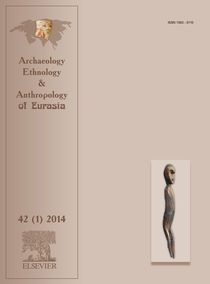
|
Archaeology, Ethnology & Anthropology
of Eurasia
42 (1) 2014
|
Annotation:
Trepanation Among the
Early Nomads of Gorny Altai: A Multidisciplinary Study
T.A. Chikisheva, A.V. Zubova, A.L. Krivoshapkin, V.P. Kurbatov, P.V. Volkov, and A.T. Titov.
Three trepanned crania from 4th–3rd century BC low-ranking burials in Gorny Altai are described. The probable
motives behind such operations are discussed, their effi ciency is assessed, and techniques are reconstructed using
optical macroscopic examination, multi-slice computed tomography, X-ray fl uorescence, and mass spectrometry
of bone tissue. Trepanations were apparently medical rather than ritual. Our data support the idea that the
4th–3rd century BC inhabitants of the Altai-Sayan Highlands had enough knowledge and skills to perform complex
cranial surgery. Because the instruments were made of tin bronze, and the Minusinsk Basin was the only place in
southern Siberia where such bronze was smelted (by the Saragash people), at least two successful trepanations were
probably performed by immigrants from that region.
Keywords: Trepanation, neurosurgery, Early Iron Age, Scythian period, Gorny Altai, Pazyryk culture, Minusinsk
Basin, Tagar Culture, X-ray fl uorescence analysis, mass-spectrometric analysis, traceological analysis.